The sketchnotes I created for the recent UX Australia and Swipe conferences have generated a lot of interest, and I’ve received a number of questions via email and Twitter about how I go about creating them. While it isn’t strictly related to UX Design, Jared Spool counts sketching as one of 5 indispensable skills that user experience designers should focus on, so it’s certainly a skill you should consider developing.
With this in mind, I thought I’d break down the approach I take, and list some tips for others interested in getting started with sketchnoting.
Want to Take your Sketchnoting to the Next Level?
Why not sign up for a UX Mastery workshop? There are two coming up in July/August:
What is Sketchnoting?
The term sketchnoting describes the style of visual note-taking that has become popular at tech conferences in the past few years. Mike Rohde has been the most vocal champion (he has a book coming out on the topic soon), and Eva-Lotta Lamm has been a prolific creator of the art form of late (she’s published a couple of books as well!).
While sketchnoting is usually practiced by attendees at conferences, it can be fun to create them in other situations, too. For example, I recently had a short stint in hospital, and captured my thoughts about surgery as a sketchnote before going into theatre:
Regardless of the circumstance, the skills for creating a sketchnote can be broken down into four basic categories:
- planning
- listening
- processing, and
- drawing.
In this article, I’ll list 20 tips for how to hone your skills in each of these categories.
Planning
For the most part, I don’t really do any preparation before starting a sketchnote. However, there are a few tasks you can do in advance so that you’re best equipped on the day:
1. Tool Up
While it’s not essential to use an expensive art pen and a trendy moleskine notebook to create beautiful sketchnotes, you don’t want to start off on the back foot. Spend a few bucks on the minimum amount of stationery that gives you the best chance at creating something you’re proud of, but doesn’t weigh you down. I recommend:
- A blank notebook large enough so that you won’t feel restricted by space (I use a Derwent A4 Visual Art Diary, with 110 GSM pages)
- A reasonable quality black felt tip pen that you’re confident won’t run out on you half way through (psst: buy a second while you’re at it, in case it does!). You may want to experiment with different tip diameters—I usually use a 0.5 Mitsubishi Uni Pin.
 A Copic grey marker, and possibly one other highlight colour for when you’re feeling really adventurous. Personally I love monochrome sketchnotes, but a splash of colour, when used for highlights, can definitely bring an extra dimension to your masterpiece.
A Copic grey marker, and possibly one other highlight colour for when you’re feeling really adventurous. Personally I love monochrome sketchnotes, but a splash of colour, when used for highlights, can definitely bring an extra dimension to your masterpiece.- This last point is a controversial inclusion, but I’d suggest also buying yourself some correction fluid. Purists might suggest that tarnishing your page with liquid paper defeats the purpose, and mistakes are part of the learning process. That’s all well and good, but if you make a minor mistake, I think it’s totally fair game to white it out before presenting it to the world. It’s not ideal, and I avoid it when possible, but a small blob of correction fluid will always look better than an ugly crossed-out mistake, in my opinion.
Note: I have tried a few times to sketchnote using my iPad and the tablet pen that I use with it. There are a couple of great sketching apps for that device like excel flowcharts. (We use Wacom’s Bamboo Paper app for many of the feature images on this site), but none of them give me the flexibility and ability to see the big picture that I need when sketchnoting. Also, correction fluid can damage the screen!
2. Practice On A Recording
Perhaps this is obvious, but if there’s a conference coming up and you’re thinking about sketchnoting some of the sessions, why not get some practice in beforehand? We live in an amazing age, where presentations on sites like Coursera and TED.com are available online for free. Instead of watching yet another Big Bang Theory, plug your laptop into the big screen TV, load up some inspiring presentations, and get sketching!
3. Master Sketching Common Objects
It’s useful to have a cache of objects in your repertoire, ready to pull out as needed. In particular, if you attend tech conferences, there are certain words that will crop up time and again (think “ship”, “cloud”, “user”, “link”). Practice visual representations of these words in advance, so you don’t get flustered trying to draw them for the first time in the middle of a talk. Here are some suggestions:
- Basic shapes: stars, squares, rectangles, triangles, circles,
- Basic objects: ship, home, fish, user, cloud, link, hand, mouse, book, newspaper, magazine, tree, envelope, brick, brain, magnifying glass, pencil, paper, scissors, knife, fork, spoon, iPhone, iPad, desktop, laptop, web browser, cursor
- Basic maps: a screenshot of Google Maps, a quick world map
- Famous brands & logos: Apple, Google, Microsoft, Yahoo, IBM…
Google Images is a great resource for finding inspiration to model your sketches on.
4. Give Yourself A Headstart
For most of the presentations I attend, I like to begin the sketchnote with a caricature of the speaker, as well as the name of the talk, the name of the presenter, and possibly the organisation that he or she represents. You don’t need to follow this format (capturing the likeness of someone’s face is something I still find very difficult to do!). However, if you do, there’s no need to wait for the talk to begin to sketch this information—that stuff is always in the conference schedule, along with a photo of the presenter that you could use as your base for your caricature!)
So while other people are changing rooms and the presenter is being introduced, I like to make a start on my sketch, so that I’m not playing catch-up with meta-data once the presentation has begun.
Listening
Here are a few tips for capturing key points from the talk.
5. Choose Your Seat Carefully
Most people attending a conference presentation don’t really care where they sit—as long as they’re able to see the projector and the presenter’s face. They may be influenced by where their friends are sitting, or may position themselves at the back in case they decide to bail on the talk halfway through.
This means that, for the most part, you should have almost free range to choose a strategic vantage point to obtain the best sketchnote. More often than not, this means sitting in the front row, so you have no visual obstacles. However that’s not always the case—at a recent conference I attended, there were a few round tables at the back. Being able to rest my notebook on a table, rather than on my lap, meant I had a much steadier hand. I think my sketches are better as a result.
6. Look For Easy Wins
I find the easiest presentations to capture in sketchnote form are ones that have very visual slides—graphics, charts, and pictures of LOLcats are all memorable and fairly obvious material to capture on your page. Sure, you can always add ideas of your own, but there’s generally less thought required—the presenter has done a lot of the work in translating words to pictures for you, so make the most of that!
It can be difficult to capture an entire chart on paper—especially if the presenter doesn’t leave the slide up for long enough—so be sure to jot down the axes and key points quickly. Then if the slide disappears, you’ll have already captured the essence of the chart and can round it out later.
7. Latch Onto Quotes
Quotes—whether they be key phrases you hear the presenter say, or quotes by other people that the presenter uses in his talk—are often poignant summaries of a topic, and you should listen carefully for them. When you hear one that resonates or beautifully summarises the point being made, jot it down and wrap it in some fancy talking marks or a speech balloon.
Processing
It takes some practice to be able to truly listen to someone talk while thinking about another topic at the same time. Some might suggest this multi-tasking skill is unique to women, but I know for a fact that there are men who are able to listen to their girlfriend or wife talk while simultaneously choosing which footy team to bet on in the coming weekend, so this is not a skill that is limited to one gender.
Jokes aside, listening and thinking in parallel is something many of us do all the time, and you can tap into this skill while sketchnoting. Here are some tips:
8. Take Advantage Of Down Time
Most talks will have intense moments where the audience’s attention is completely focussed, followed by slower sections in between. This light and shade is the mark of a good presentation, but it’s also a boon for you, as it can provide you with some sketching time.
If you hear something amazing during an intense moment, and don’t want to turn away, don’t! (or jot down the one phrase that summarises the moment). Then, when the moment has passed, you can tune out a little and start to embellish those words (using fancy typography, an accompanying graphic, or additional comments).
9. Pace Yourself
A lot of people are stunned at how I’m able to judge the amount of space it takes to capture the essence of a presentation on a page. I have a secret weapon here—it’s called maths. Yes, I’ll keep an eye on the clock, and if I haven’t filled over half the page by the time that the presentation is halfway complete, then I’ll start getting busy: writing larger, sketching images that might have been playing around in my head, and sifting through what I’ve heard to distil whether any of it is worth writing down or capturing visually using an icon or image that might suit. Likewise, if I’ve burned through page real estate too quickly, I’ll slow down and be more discerning about which snippets of the remaining talk will fill out the remaining space on the page.
10. Curate
It can be tempting to try and capture everything about the presentation. Instead, think of yourself as an art curator whose job it is to sort through the noise, and select a few standout masterpieces to include in your exhibition. Your sketchnote should not serve as a comprehensive reference—it’s a moment in time that reflects the takeaways that you found important.
11. Let It Flow
Don’t confine yourself to a four-column layout, or always move in a strictly left-right fashion. The page is your canvas, and while there’s nothing wrong with creating a very logical, sequential layout, you might try mixing it up on occasion—start in the centre of the page, or move around organically; write sideways, upside down, or in a loop-the-loop when you feel like it. Don’t fret about whether it will look any good, just let the sketch flow.
Additionally, if the presenter hits a technical hurdle, makes an unintended joke, becomes flustered by a heckler, or is interrupted by a security alarm, weave that into your sketch as well! Sometimes the best aspects of a sketchnote are the fortuitous, unplanned activities that accompany the official slide set.
Drawing
Ultimately, the words and pictures you form on the page is what makes your sketchnote. Here are some tips for making them look awesome.
12. Be A C.R.A.P. Sketcher
In The Non-Designer’s Design Book, Robin Williams introduces the concept of C.R.A.P. design. Of course, she’s not suggesting you should arrange your elements on the page in a way that looks terrible, but that you make use of:
- Contrast: This could involve using light and dark colours, combining a straight, rigid typeface with a cursive script, or applying heavy and light shapes.
- Repetition: Litter the same visual cues throughout the design, such as drop caps, bullets, or some little cartoon frog that appears regularly
- Alignment: Line things up on purpose, rather than having them almost match. It looks smarter and makes text easier to read.
- Proximity: Group related objects or concepts on the page. If two concepts are completely unrelated, draw them on opposite ends of the canvas.
These four principles will get you a long way to creating a sketchnote that is pleasing to look out, rather than one that looks like a collection of random scrawls.
13. Use Consistent Type
When I say “type”, I really just mean “make your handwriting neat and the same.” This may be counter intuitive if you have messy handwriting, but the best tip I can give is to slow down when you construct each word. Be patient about crafting each of the letter forms one by one, rather than your usual scrawl. Most conference presentations are 50 minutes long—that’s a lot of time to fill an A4 or letter-sized page, so you don’t need to hurry.
I’ve begun utilising a very tall, narrow typeface lately, mostly because I like the look of it, but also because it allows me to fit more words on one line. It also contrasts well with fancier, more decorative typefaces that I might want to use for contrast, such as a cursive script or a heavy, blocky heading.
14. Employ Type Empathy
Type empathy is a term I first heard back in design school. It occurs when the meaning of a word is accurately reflected by its typeface. Here are some examples:
I’m sure you can think of other examples. It can be really fun to invent empathic typefaces on the fly! If you hear a word that prompts a specific image in your head, see if you can work that image into the type somehow. If that sounds too hard, you could always just keep an eye out for one of the above words (or a synonym) and just copy what I’ve done here!
15. Draw Beautiful Ampersands
The ampersand is a much-loved character by graphic designers. Depending on the typeface, it can be a simple, understated connector or an elaborate, eccentric statement all of its own. Here are a few different types of ampersands for you to practice with. Being able to whip one of these out instead of your usual handwriting can really make a heading stand out.
16. Use Creative Containers
Speech bubbles, thought clouds, sound effect containers, dotted-line rules, double-border rectangles: there are a ton of simple containers that you can add to your sketch to chunk text in a way that is visually interesting. Here are a few of my favourites:
17. Use Creative Connectors
While containers are useful for isolating chunks of text, connectors are used to group those chunks together. Arrows are the most common connectors that I use in my sketchnotes, but there’s no reason you couldn’t include a range of swirly flourishes and other intricate shapes throughout your sketch. In fact, it might be a good idea to keep a separate “doodle” page, where you can experiment and invent new shapes to be brought across into future sketchnotes.
18. Apply Shading & Colour
That Copic grey marker I mentioned at the start of this list is how I add depth to my black and white sketches. You can use it to:
- create shading on one side of an object
- add a shadow on the ground below an object
- highlight text
- colour in containers, for visual contrast
- the list goes on…
Some sketchnoters also like to include a single colour, to highlight text, draw attention to parts of a sketch or make key concepts lift from the page. The key to colour is not overdoing it—when in doubt, I’d suggest keeping it black and white.
Here’s another dirty secret of mine: the sketchnotes I created at a recent conference all had the grey marker effects applied on the plane home from the conference. I don’t subscribe to any kind of purist mentality that “the sketch must be completed during the presentation” . It only took a few minutes to add grey shades to those sketches, and I think the extra depth that it brings to the sketch is terrific.
19. Find Your Own Style
I’ve given some template approaches in this post which I hope will give you a good framework to build upon, but over time your sketchnotes will develop their own unique personality. Be proud of your sketches, refer to them regularly, and you’ll see an original style evolve.
20. Share Your Work
In general, people love seeing how other people think, and a sketchnote is a good approximation of how you have processed a presentation. Be sure to share your sketch online, either via a blog, a service like Flickr, or by emailing your masterpieces to the Sketchnote Army blog. You’ll find most people will be supportive of your efforts, and you’ll gain confidence from any feedback you receive.
In addition, a sketchnote (either a digital copy or the original piece of paper) is always a wonderful, unique way of thanking a presenter for the time they have put into their presentation.
I hope you’ve found these tips useful, and I look forward to seeing your creations online! Be sure to check out Mike Rohde’s book, The Sketchnote Handbook, which features a two-page spread by yours truly!
If you liked this post, feel free to share it on Twitter or Facebook.

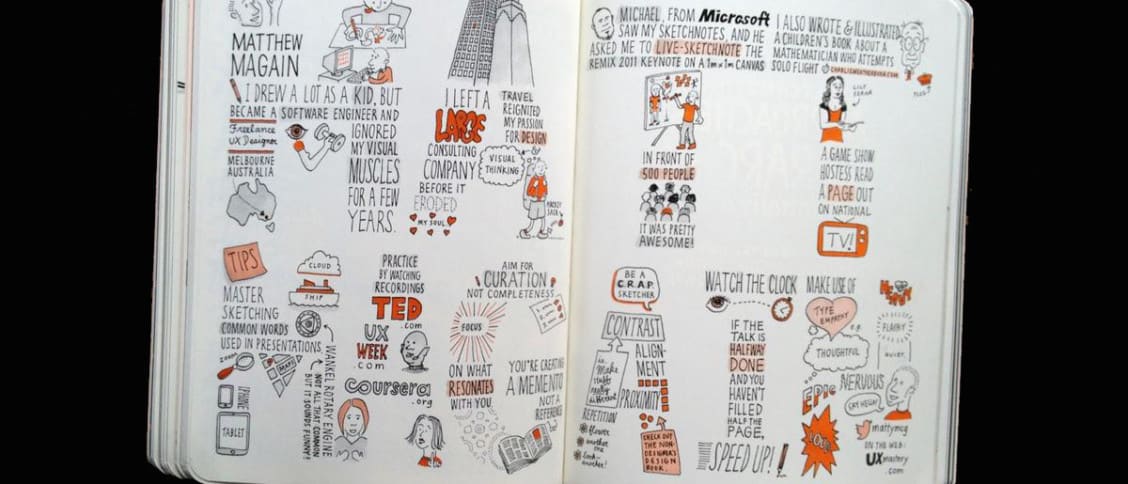
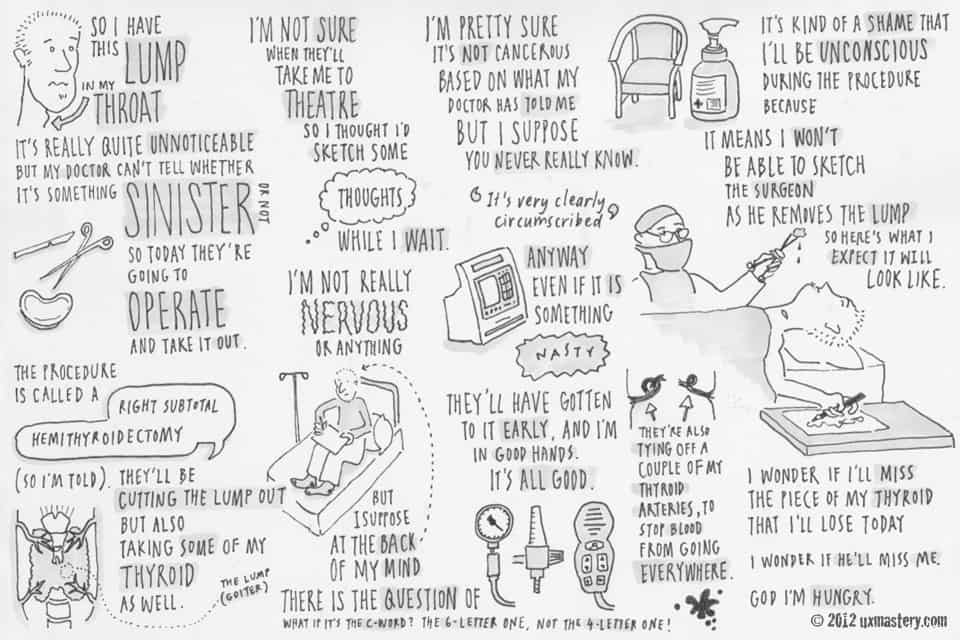
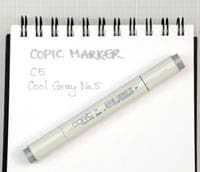
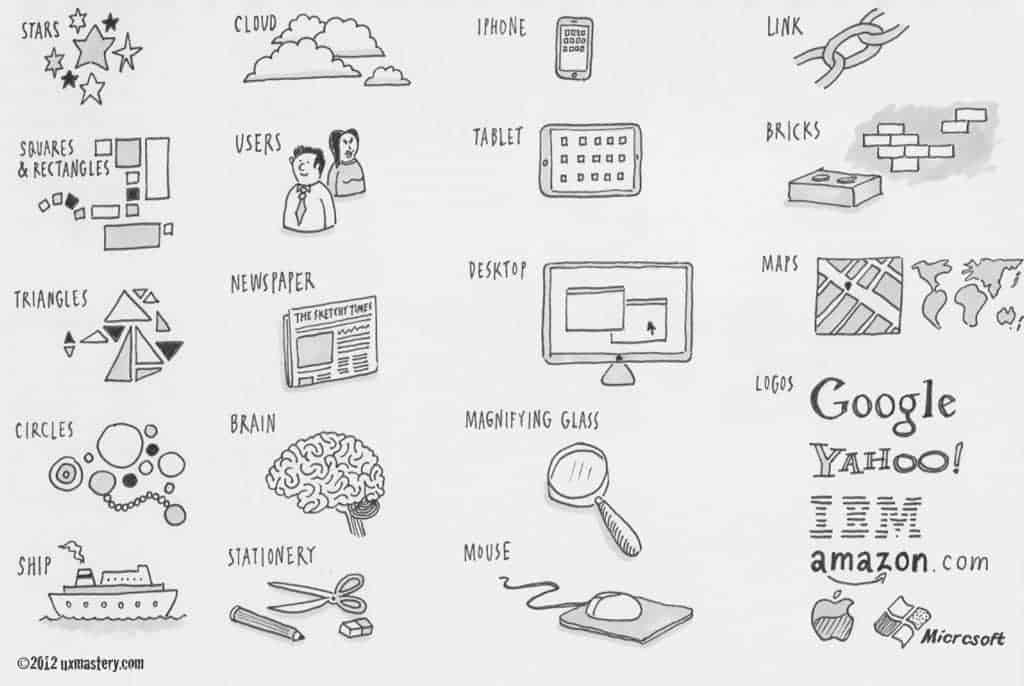

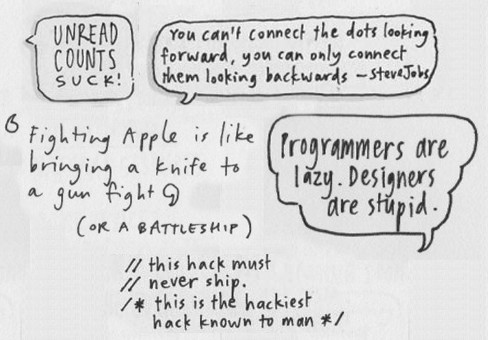
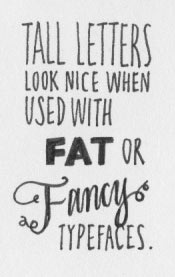
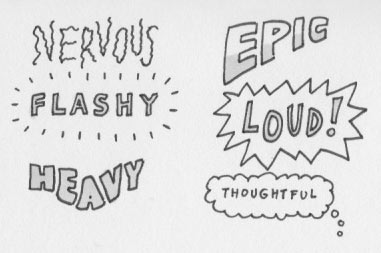

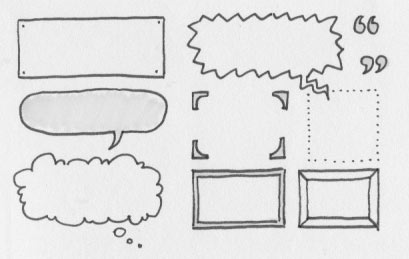

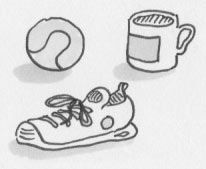


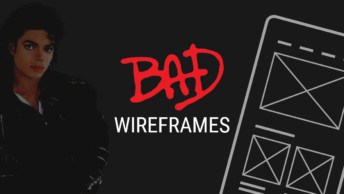

Very engaging way of communicating complex ideas. Great work Matthew
Thanks Jonathan!
I always try and take notes, but they look pretty terrible. I really need to work on pen control and just practice a lot more. Thanks for the great tips. I never thought about practicing or working on some of the generic objects and connectors (clouds, magnifying glass, etc.).
I know I’ll never really want to show off my notes, however, this makes me feel like I can get to a point where I’m not trying to actively hide them from others sitting close by.
Thanks for sharing your thoughts on how to develop these skills!
Rob
Glad you found the tips useful Rob! All I’d say is don’t get discouraged—just keep plugging away. I’m certain if you keep at it, then look back at your notes from a couple of years ago, the improvements will be very noticeable!
Thanks for commenting.
Awesome article. Exactly what I was looking for. Matthew you have inspired me to go all out visual!
Some things I never would have picked up til you mentioned it…it’s the little things that made all the difference between an average note and a fabulous one!
A total convert!!!
Thanks Cindy, glad to hear—look forward to seeing your creations! :D
+1 to what Cindy says and I cannot write anymore, combination of old age and keyboard overuse. Sad part I cannot draw either but this has given me inspiration to give it a go. Have always been in awe of how Gary Barber (@tuna) does this stuff when I sit next to him and now ima have a real go – lots of practice time at Web Directions coming up :-)
Thanks so much for sharing
Ashul
Yes I agree Gary’s sketchnotes are always terrific to look at. :)
Cheers Ashul
Wonderful article Matt.
It’s just practice folks, you will start off slowly.
I have about ten sketchbooks full of sketchnotes, I look back on the early ones now and cringe. But I know that in the future I will look back on the ones I have recently done and cringe at them as well. It’s about relative scale, if you practice you will get better and over time develop your own style.
As Matt suggests go practice copying and drawing standard objects, increasing your standard library, practice these all the time till they become second nature to draw.
Also practice printing neatly at speed.
Knowing what to draw and what not too is sometimes a guessing game. Don’t worry about making mistakes, after all the sketchnote is for you not other people.
Worst is when a speaker is allowed to go over time or under time or your are given the wrong finish time. That does stuff up the sketchnote. Mind you can always backfill if the talk runs short.
Want a real challenge – sketchnote the evening news.
Listen to the man, there’s some sage advice right there.
Love your work Gary.
Matthew, I have recently given my high school English students this method of taking notes, and it is already making a difference. They are excited about this. I just started doing this myself, so the kids do not feel like they have to be spectacular artists. Students say they are already finding it easier to take notes. In initial observations, I can now visually “see” what my students are getting from their reading and then making adjustments. I am excited about sketchnoting and hoping that on the academic side, this takes hold outside of individual schools that allow teachers to be creative.
That’s fantastic Cary. You’re spot on that someone’s sketch is a window into how their mind works! I’m actually in discussion with my daughter’s school about giving a sketching workshop to some of the students, and am pretty excited about that (as is my daughter!)
If they want to see some evidence from an academic level, let me know via Twitter @dothgrin as I am compiling evidence and documenting how my kiddos respond to this great approach. Thanks for what you do…it has changed how I take notes and it changing my classroom!
Cary, I am also a teacher. Can you tell a little more about how you teach sketch noting and use it in the classroom?
Thanks!
You could now see me carrying the sketching tools around…I have to admit that I was avoiding sketching until I read this article. Coming from an Engineering background, I always thought that I do not have the creativity genes in me…but the article has done the magic of removing those cobwebs.
Wonderful to hear Shital. Everyone has creativity within them, it’s really just about having the confidence to let it out! And a bit of practice always helps, of course ;)
I am fast becoming a HUGE fan of yours. This is by far the best post I’ve read on sketch-noting. And thanks for validating me again on the same day: first with that What is UX Design vid that I just discovered, and now for reinforcing my instinct to practice sketching common shapes. No other post I’ve read has offered the tangible tips you’ve laid out here. Thank you!
@scubagirl15
Ha! My pleasure Andrea! Thanks for saying so!
We have some exciting things in the works here at UX Mastery which I’m certain you’ll enjoy, so I’m glad to have you join the community.
Matt
I was getting called “old school” for sketching during meetings. Recently our department held a sharing session on….sketch noting! Guess that validates this old school method! Thanks for highlighting what every grade schooler knows: a picture is worth a thousand words!
Sometimes it requires strength to champion what you know is right. Keep sketching!
I like. Back in the day we would get yelled out for ‘doodling’ instead of taking notes.
Cheers Joshua. Sunni Brown’s TED talk mentions research that shows the advantages of doodling. Check it out!
Hi Matthew, thanks for all your thoughts and insight. This concept is new to me, by biggest challenge will probably be my organization skills. My big question, which I haven’t seen noted anywhere is; what if any type of money can a sketch note artist make?
Thanks,
Paul
Hi Paul. I’ve been fortunate enough to have a handful of paid gigs creating sketchnotes for conferences and other events. The conference organisers like having something like this to distribute to attendees after the event is over. That said, as I’m discovering, sketchnoting is really just a small-scale version of graphic facilitation or graphic recording (large-scale sketchnotes on a whiteboard or piece of paper while a meeting or presentation is taking place). There are plenty of folks who make graphic facilitation their full-time occupation, and do quite well out of it.
Hi!
thanks so much for the article and all the other info on visual notes! Do you take the notes thinking for OTHER people to understand them? Cause I made a couple of notes to try, and to me they looked pretty cool (to start with) but then a friend said that he wasn’t sure anyone else would understand them. He thought that even if he had gone to the same class, he would not be able to ask me to lend him my notes. So I started thinking whether these are MEANT to be shared, and if they are, are there any specifics to keep in mind in order for everyone to understand them?
Hi Victoria
I believe they’re meant to be shared, but it depends on what the intention is when sharing them. As I mentioned in point 10, you should aim for “curation, not completion”. But the upshot of this is that this is not a technique that you should count on to capture everything. Stuff will slip through—but if it’s completion you’re after, take a recording and create a transcription. Sketchnoting is terrific for recall, so if you were to talk through the notes to someone else, you’d be surprised at how much you’d be able to remember. But are they the perfect format for capturing information to pass onto someone else? Not necessarily. But the audience you share them with may find them interesting and inspiring, which may trigger conversations that boring written notes would not.
Best of luck with it.
Matt
Hi Matt,
Awesome post!
I am interested in this topic and have been only thinking about where to start and who’ll give me the chance to do sketch-noting for their talk. So, I love your idea of using videos or TV programs to start with (Why didn’t I think about this earlier? :) ). I’ll make use of this idea very soon (maybe today!).
I know practice makes things easier but what happens when the sketchnoter does not capture all the important points or just runs out of space?
regards,
Mandar
About me: I am a full time fine artist and sculptor with technology & management background and I have special love for the field of design as it brings together art and engineering together.
Thank you for this amazing overview to sketchnoting. I’ve heard that term thrown around quite a bit without really ever understanding what it meant. This post really helped me see myself using sketchnoting and gave some amazing tips on getting started. I love the idea of practicing with a recording and am excited to try out some skethnoting with the next TED talk I listen to.
And as a person who would love to be an artist but can barely draw a cat, I really appreciate the basic drawing tips you included.
Hi, Matthew –
Thanks for such a helpful primer (and visuals!) on sketchnoting basics. I’d like to include a couple of your images and tips (type empathy, containers, connectors) in a handout I am creating for an educator workshop on visual notetaking that I am leading next week. May I do so with clear attribution to you and this post?
Thanks for your consideration.
Shelley
Hi Shelley, you’re very welcome! We’re glad you found them useful, and would be chuffed if you included them in your handout with attribution. Good luck with the workshop!
Thanks Matt, a clear overview with some helpful tips. I must agree with Gary’s comments (Sept 2012) that you just need to jump in and have a go – and practice! I’ve only recently discovered Sketchnoting and my personal journal has taken on new interest and fun for me as I incorporate some sketch note ideas into my personal reflections.
It has also changed the way I take notes at church. Slowing down my note taking to include some graphics or images and suitable typography helps me be more intentional and deliberate about capturing the really important points and key messages.
Have a go folks!
Hello matt,
I red about sketchnote and i found myself get attracted towards it.As i love sketching but there are few things which i want to ask to you guyz.
Just need to ask few things.
Does knowledge of sketchnote in UX designing required?
As far as my concern i am good in sketching,will it prove for me a good tool?
Does it require any special skills?
Is it different from UX?
Will you provide any guidance or video tutorials on sketchnote?
How much it helps in becoming a UX designer?
Thanking you and regards.
Anshul Badjatya
Looks great! When is your next course? Would love to attend!
Is there any online software to use for sketch notes? My school tries to limit paper. So we have Macs and iPads instead. Some of us even have windows computers.
Yes! I would like to know as well :) Especially for ipads!
I’m going to read and reread this many times. Thanks for the great content.
Hi Matthew
Loved this article- so very helpful. I’ll be using it in my work from here on in. I have often recorded presentations and talks in this way but never thought of using it in my work!
Steve
Thanks for the tips, Matthew.
Andre =D
Interesting and helpful post. Thanks a lot! I always thought of sketch-noting as a fun thing to do when you have free time but not as a way of note-taking. You know, it seems so interesting (especially now when I need to finish my Chicago style annotated bibliography). I’ll definitely get sketching from some inspiring presentations as you recommend. However, from my point of view, you need to be talented and highly creative to do such a thing. I can’t tell that I’m original and creative. Will I be able to master in sketching if my talents are pretty limited?
Hey Matthew,
Thanks so much for sharing.
I have only within the last year heard about sketchnoting and have been applying it to my note taking since then with some measure of success. The outline you have just given is going to be a great help to my process and help give me a more confidence to continue on the sketchnoting journey.
Thanks again for the tips, I will put them to good use.
Thanks for your comment Adebo! I’m glad to hear it’s helpful. Good luck on your sketchnoting journey. Keep us in the loop with how you go!
Great! I am an English Teacher. I found this article pretty interesting to me.
Thank you to share this information Matthew.